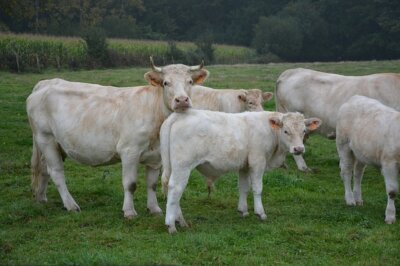
Paramphistomiasis, or rumen fluke, is of increasing interest as a parasitic disease of livestock producing a range of non-specific symptoms including diarrhoea, weight loss and general weakening.
Paramphistomes are two-host trematode parasites that spread their lifecycle between mammals and molluscs. Grazing on infected snail material introduces parasite cysts into a ruminant’s digestive system where hatched-out flukes feed before heading up into the rumen. Here they attach to the rumen wall and feed on its contents like a mass of pink maggots. Resistant eggs (oocytes) pass through the gut and out with the host’s faeces. Taken into roving snails, the oocysts hatch and reproduce to complete the life cycle.
Observed in British livestock as far back as the 1950s
Rumen thrives in the warm moist tropical climate with little significant impact on livestock economics. More recently, the organism has become increasingly common in temperate climes infected an estimated 20% to 30% of European livestock. Recent studies report the parasite as present in up to 77% of sheep in Ireland with prevalence across the UK varying between 29% and 52%.
Observed in British livestock as far back as the 1950s, the prominent paramphistome species identified in the UK is Calicophoron daubneyi. Since the late 2000s, the trematode’s eggs have started appearing in routine Veterinary Investigation Diagnosis Analysis (VIDA) examinations.
Detecting the heavier eggs
Rumen fluke eggs are relatively heavy, compared to the oocysts of most intestinal parasites. Consequently, centrifugation using flotation solutions and convenient recovery systems such as Ovatube are not efficient in the detection of rumen fluke oocysts in animal faeces. Veterinary laboratories generally employ ‘sedimentation’ rather than ‘flotation’ techniques to detect the heavier eggs of trematode flukes.
In sedimentation, a small sample of faeces is thoroughly suspended in water and the bulk of solid material removed using a coarse metal or cloth strainer. Left to settle, the sediment from the filtrate is then re-suspended in clean water. Adding a drop of methylene blue or malachite green to the recovered solid material from this suspension will clearly stain remaining faecal material blue or green, leaving parasite eggs unstained.
Diagnosis and control of this new invader
A veterinary microscope equipped with 10x eyepieces and a 10x objective allows identification of Paramphistomum and other relatively heavy parasite oocysts including Fasciola hepatica (liver fluke). Using a McMaster Worm Egg Counting Slide, to relate the number of eggs found to the number of faeces sampled, allows a quantitative assessment of the level of parasite infection.
The likely economic impact of the spread of rumen fluke is as yet uncertain. Fortunately, because its eggs can be detected during examinations for liver fluke in faecal samples, and its similar life cycle, veterinary laboratories are forewarned and forearmed in the diagnosis and control of this new invader.
To find out more about our large range of veterinary products visit our website: www.vetlabsupplies.co.uk or Telephone: 01798 874567

